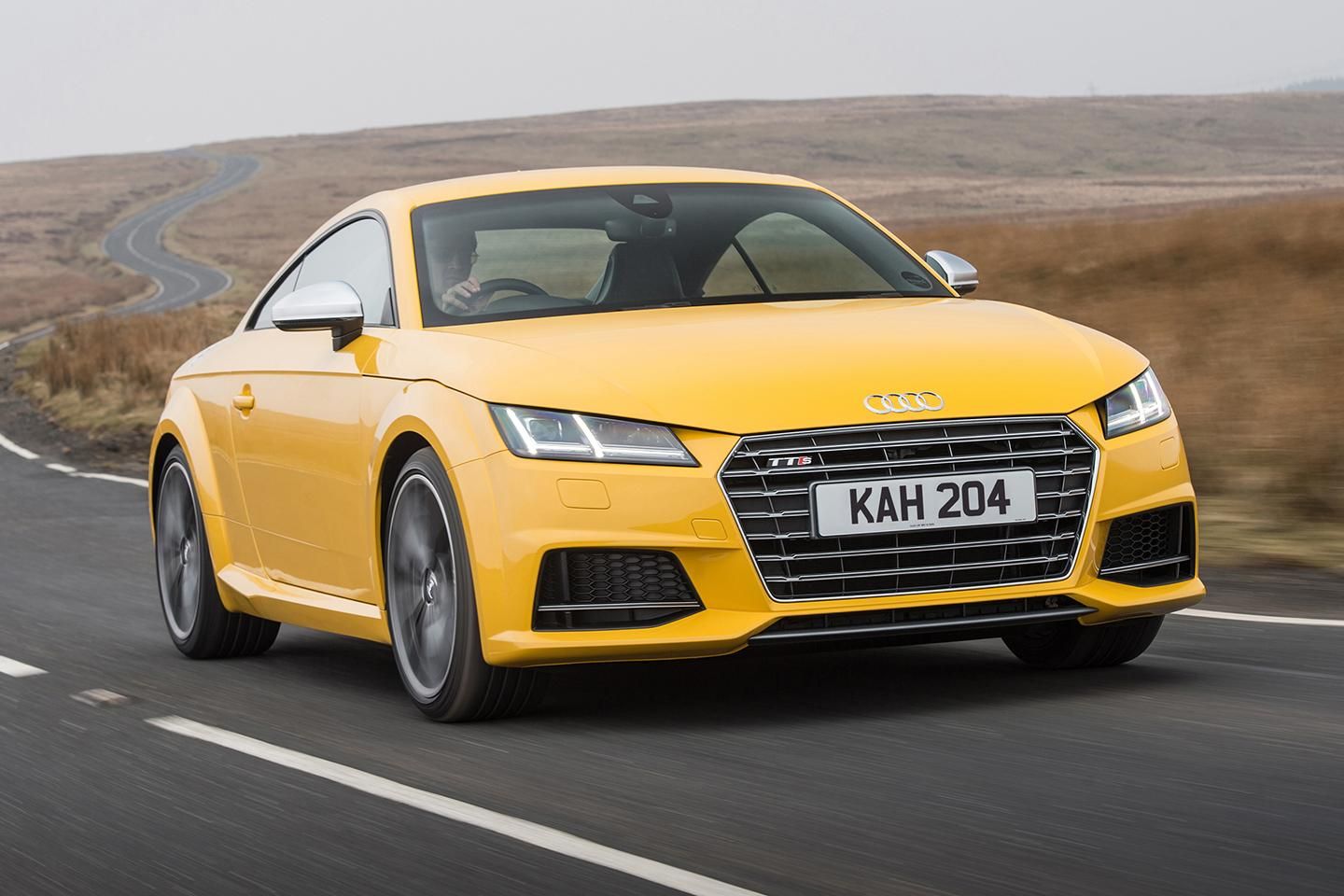
Key considerations
- Available for £18,500
- 2.0-litre inline four turbo, all-wheel drive
- Easily out-drags a Porsche Cayman
- Not quite as much fun round corners though
- Strong reliability and beautiful quality
- 2023 is the last year they’ll be making them
Have you ever called an MX-5 a hairdresser’s car? If so, with all due respect you’re playing a bit of a mug’s game there. By negatively stereotyping good cars all you’re doing is depriving yourself of a great driving experience. A lot of that MX-5 slurring hit the Audi TT too. Somehow it picked up a ‘non-manly’ label in the UK, for reasons we can’t actually remember. Was it simply the curvy bubbletop styling that offended macho types?
Who knows – or indeed cares. To us, the distinctive Schreyer/deSilva design still looks fresh today having been nicely honed over successive generations, so it seems a shame to remind you that its days are now very much numbered. The current gen-three Type FV/8S car is the last recognisable TT that Audi will produce, and 2023 will be its last year. Audi was actually going to axe it for the 2021 model year but they gave it a stay of execution while they were putting the finishing touches to the TT’s ’emotional’ replacement, which apparently is going to be a battery-powered four-door coupe.
The Type FV/8S made its debut at the 2014 Geneva show and was built around the VW Group’s new, aluminium-rich MQB platform which brought real benefits in lightness, strength and rigidity (23 percent up on the gen-two), which was all good news for the most powerful and heaviest model in the gen-two range, the 3.2-litre V6. Well, it would have been if Audi had continued with that engine in the gen-three TT, but they didn’t. Instead they binned the heavy old 3.2 and used their turbocharged inline 2.5 five-pot to power the new TT’s halo model, the 2016 394hp RS, the only new TT not to have a 2.0 TFSI four.
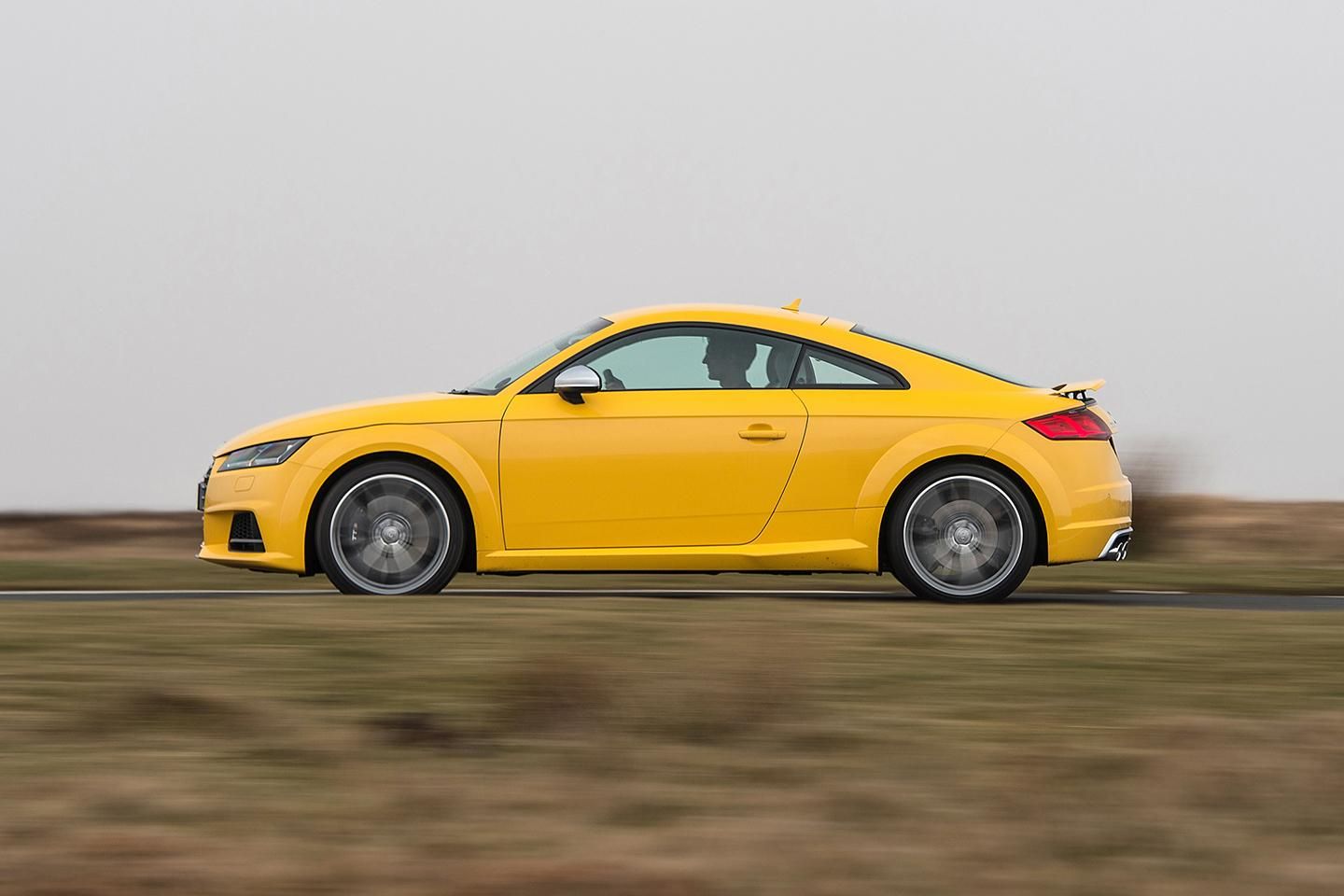
We did a separate Buyers Guide on the RS last March (2021) so in today’s guide we can give the ‘lesser’ gen-three TTs their place in the sun. If indeed that’s where they deserve to be. We’ll find out over the course of the next few paragraphs.
Let’s start off by saying that there’s not much lesserness going on with the non-RS gen-three TTs. They came with a choice of petrol or diesel engines, with the more powerful 2.0-litre petrols (and the 2.0-litre diesel) offering a choice of quattro or front-wheel drive, and the lower-powered ones managing with FWD. Because this is PistonHeads (where speed matters) we’re going to concentrate on the TTS which had the Mk 7 Golf R’s high-performance version of the EA888 2.0 TFSI petrol motor.
The 306hp power peak for European-spec cars was impressive enough on its own, but it was the availability of 280lb ft of torque across a near-4,000rpm wide spread that made the TTS so deceptively rapid cross country, especially when it was running through the six-speed S tronic dual-clutch transmission. Throw in the Haldex-based quattro all-wheel drive system and you hardly had to slow down in the rain.
A six-speed manual was also available for the TTS and this actually started off as the standard transmission for this model. After the TT reprieve announcement in 2021 the manual was dropped entirely from the range. All TTs from that point on got a seven-speed dual-clutch ‘box. The TTS’s power was reduced by 4hp in 2021 thanks to the addition of an exhaust particulate filter. 2018 brought reworked bumpers and new alloy wheels for some versions and updates to the Virtual Cockpit display, of which more later. It also heralded the confusing new Audi model naming regime, in which the TTS became known as the 50 TFSI Quattro TTS.
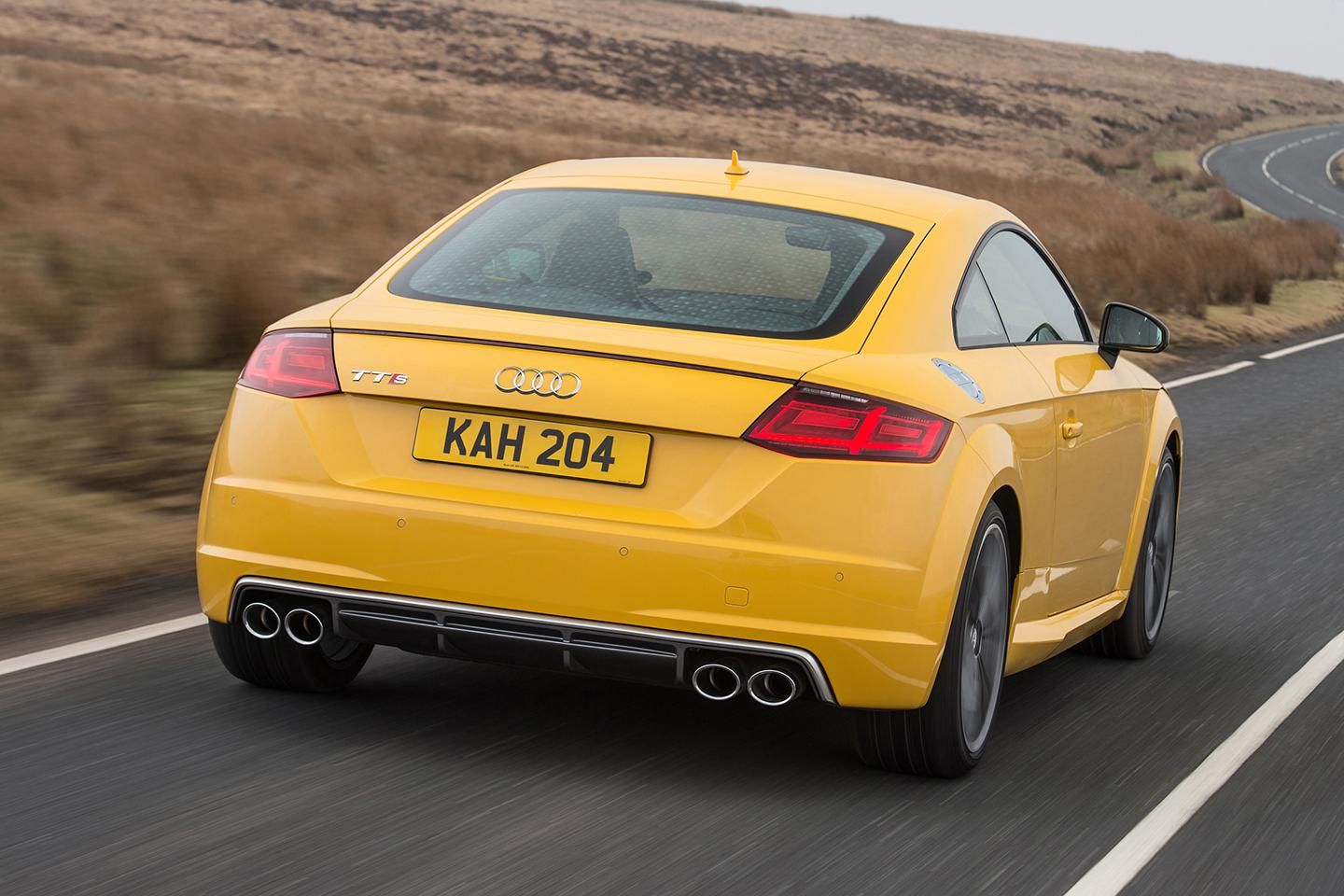
Base level gen-three TTSs had adaptive suspension as standard along with nappa-leather covered sport seats with diamond-quilted centre sections and contoured, pneumatically adjustable side bolsters. 19in alloys, lane assist and a 9-speaker sound system were also included in the standard TTS spec. Stuff like Audi Connect, Bang & Olufsen audio and 20in wheels shuffled across from the options list to the TTS’s standard equipment list in 2021.
Road testers have been giving the TT five-star write-ups since it first went on sale in 1998 (so long ago!). Thanks to Audi’s careful development of the vehicle they still are, which is kind of remarkable given the competitiveness of a market inhabited by top-notch rivals like the Cayman and M4. Punters don’t always see things in the same way as road testers, of course. Our requirements don’t always fit into neatly headlined categories, and motoring magazines or websites are yet to create a new category for subjective appeal. For us the TT is either an impractical four-seat coupe that’s not worth considering at any price or a very practical and extremely capable sports car that also happens to have a hatchback and four seats. If you’re that second type of bod, and if you’ve decided you don’t need a full-house RS and you don’t mind in the slightest that the TT will be no more after 2023, then this guide is aimed straight at you.
How much will it cost you to get into one of these? Well, we found a repaired Cat S gen-three TTS with 46,000 miles on it for £16,795, but for undamaged cars the minimum entry price is generally going to be £18,500. At the time we were putting this guide together the most affordable gen-three 306hp TTS in the UK could be found on PH Classifieds. There’s a link to it in the PH Verdict at the end. Interested? Why would you not be? Let’s take a closer look at what you get.
SPECIFICATION | AUDI TT S (2014-on)
Engine: 1,984cc inline four 16v turbocharged
Transmission: 6-speed (7 from ’21) dual clutch auto, all-wheel drive
Power (hp): 306@5,800-6,200rpm
Torque (lb ft): 280@1,800-5,700rpm
0-62mph (secs): 4.6 (auto), 4.9 (man)
Top speed (mph): 155
Weight (kg, dry): 1,365 (man), 1,385 (auto)
MPG (official combined): 38.7
CO2 (g/km): 168
Wheels (in): 18-20
On sale: 2014 – now
Price new: £40,270 (2014)
Price now: from £18,500
Note for reference: car weight and power data is hard to pin down with absolute certainty. For consistency, we use the same source for all our guides. We hope the data we use is right more often than it’s wrong. Our advice is to treat it as relative rather than definitive.
ENGINE & GEARBOX
Although fans of other German sporting marques might argue that the TT’s 2.0 four was two cylinders short of being a classic engine, they couldn’t in all conscience dispute that the hottest TFSI combined serious performance with an eminently ‘sportlich’ feel (thanks in part to controllable flaps in the TTS’s exhaust system) and an excellent official combined economy figure of nearly 40mpg.
The 306hp engine gave the TTS a 0-62mph time of 4.9sec even with the manual gearbox. With the auto the time came down to 4.6sec pretty much irrespective of the prevailing road conditions. That was the best part of a full second less than it took a PDK-equipped Cayman to reach the same speed, which gives you an insight into what sort of difference a good all-wheel drive system can make. Audi’s quattro reached new levels of intelligence in the gen-three TTs. Choosing Dynamic in drive select allowed the driver to feed more torque to the rear wheels and in a more timely manner. At the other extreme, ‘efficiency’ mode could in certain circumstances cut off all power from the rears.
The 2.0 TFSI engine combined direct and indirect injection to help deliver this high level of performance without the potential problems of carbon buildup that could dog direct-injection only engines. Probably four out of every five third-generation TTSs were ordered with the six-speed twin-clutch S tronic gearbox (seven-speed after 2021) even though the six-speed manual that was discontinued in 2021 and that knocked 20kg off the car’s overall weight was slick and positive. The S tronic had a launch control function. Make sure you keep the fluids for this and the quattro system fresh.
Engine reliability does seem to be excellent with no big shouty problems. You might see that as a green light for tuning. A basic remap should take you to 350hp. Throw in some hard parts on the intake and exhaust sides and you should be up to 400hp. Add a larger turbo to tweaked fuelling and that’s 450hp.
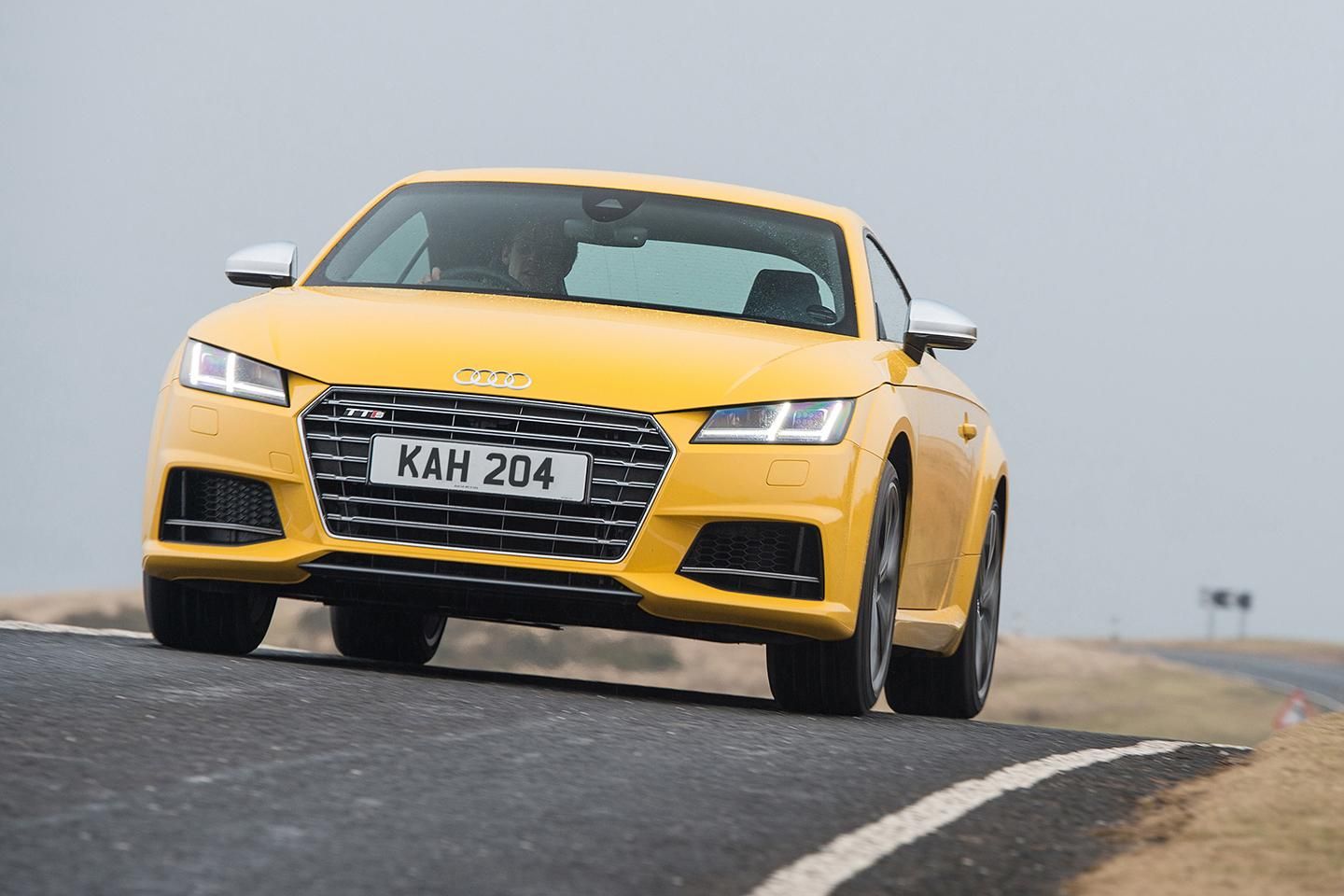
CHASSIS
We’ve just remembered one of the reasons why some folk weren’t impressed by the first TT. Handling. There was nothing wrong with the amount of grip on offer. That was prodigious, but the shortage of feel through the steering wheel and the amount of understeer were often and, to be fair not entirely unjustly, criticised.
By the time the MQB platform came on stream in the gen-three with its high-strength steel panels and aluminium in the sills, roof frame and componentry of its McPherson front/four-link rear suspension, much of the perceived numbness had been ironed out of the TT. In terms of ultimate feedback it was still no Renaultsport or Ford ST and the low speed ride was still pretty firm, but the electro-mechanical progressive steering was okay, the car turned into corners smartly and the stability control system could be partially or completely disabled to provide some authentic rear-end adjustability, especially in the more powerful TTS which incidentally rode 10mm lower than normal TTs. Any rattling from either end of the car after medium mileages (50-60k) is often indicative of worn wishbones, balljoints and anti-roll bars.
The TTS also had lightened front brake calipers (squeaking pads could be a problem with any TT brakes) and adaptive ‘magnetic ride’ suspension as standard. Of the three core settings – Dynamic, Comfort and Auto – Auto felt right most of the time and Dynamic felt right the rest of the time. You’ll have no trouble finding owners who prefer ‘magnetic ride’ to passive suspension, or indeed finding people who think the absolute opposite. Try both setups if you can. TTs look great on 20in wheels, a bit like a faux-R8, but you may find the ride to be quite harsh on these. TTS wheels of any size are easily kerbed.
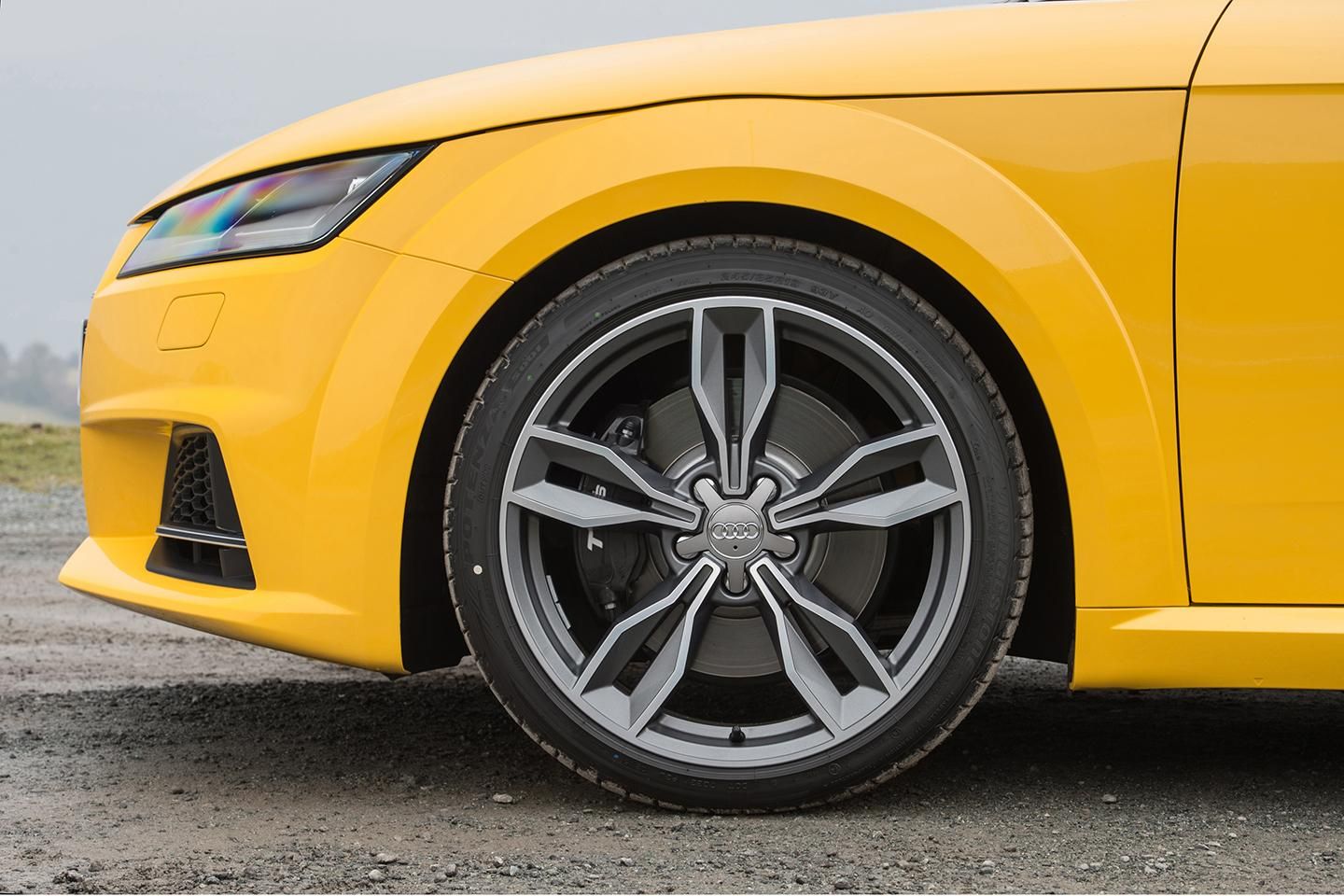
BODYWORK
Although the colour palette for gen-three TTs was extended to take in seven new colours including Nano Grey and Tango Red, with two extra options for the TTS (crystal-effect Panther Black and Sepang Blue), almost every TTS on sale in the UK seems to be in a sober shade of blue, grey, black or white. Still, the odd car was ordered in odder colours. In the Verdict at the end we’ve put a link to one of these that’s for sale in PH Classifieds.
Whether you’re cruising the classifieds or recceing the retailers, the ability to tell the difference between a gen-two and a gen-three TTS is important, especially if you’re shopping in the crossover year, which is mainly 2014 but could be 2015 in the case of late-registration gen-two cars. There’s not much cash difference between a low-mile gen-two and a medium-mile gen-three, and indeed some gen-twos will be more expensive than some gen-threes. In an ideal world you don’t want to be losing out on the gen-three’s MQB platform or on its extra 40hp, so look out for its shallower headlights and taillights, narrower bumper ducts (without driving lights), and the slight kink in the rear side windows.
Some Roadster owners have experienced problems with water ingress into the cabin as a result of drain holes blocking up. The cost of rectifying the electrical difficulties that this could cause with the sound system and the electric seats might not be covered by Audi’s extended warranty. Windows have been known to freeze up in cold weather. If that happened you could be immobilised until you got it sorted (or until the weather warmed up) because the glass needed to drop a bit in order for the door to shut.
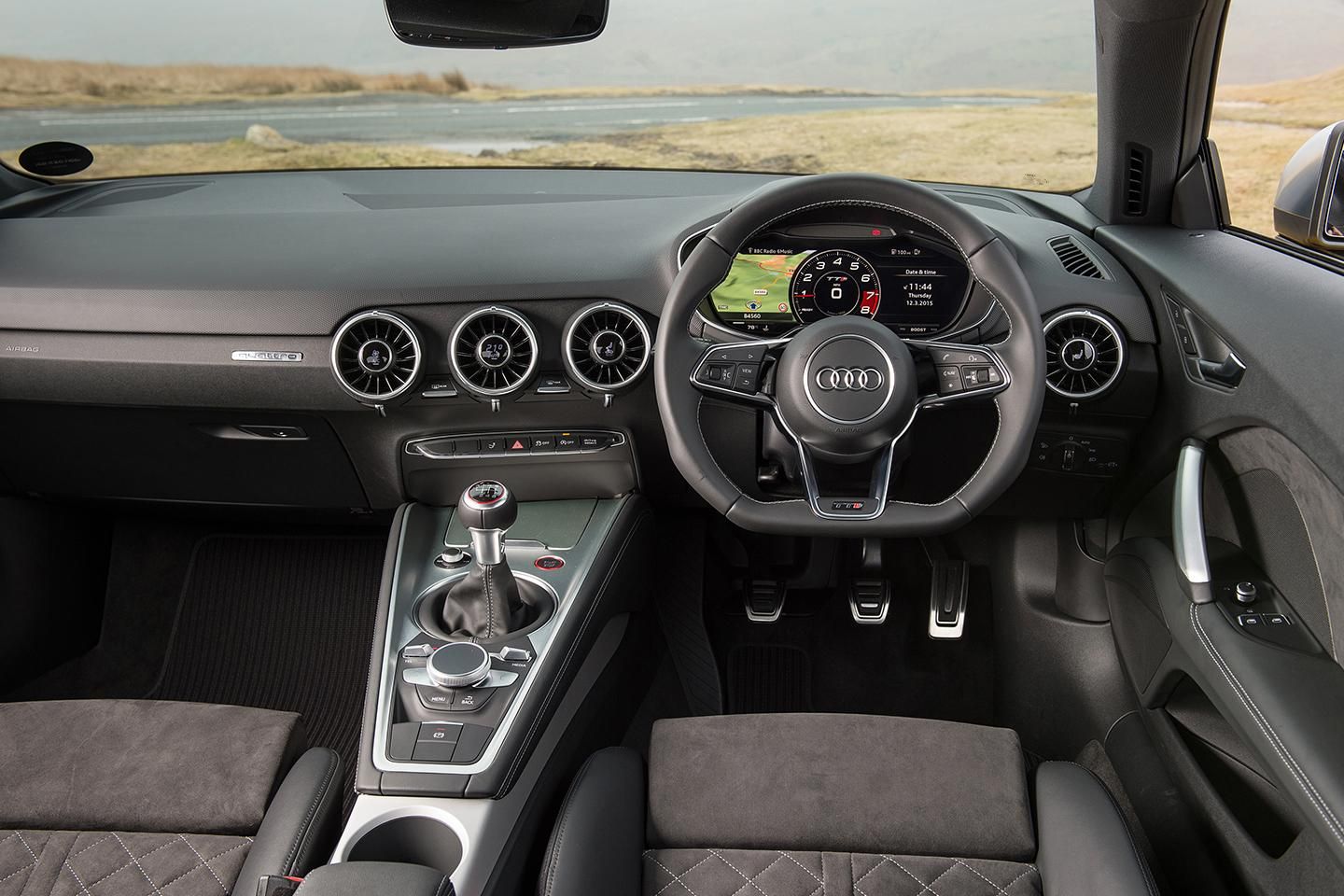
INTERIOR
One thing you could traditionally never have a pop at Audi for is cabin fit and finish. That tradition was very much continued in the gen-three TTs. Range-wise, the trim levels were Sport, S-Line, Black Edition or Vorsprung Edition. Sport cars came with 18in wheels, Xenon headlights with LED daytime running lights, cruise control and a retractable rear spoiler. S-Line switched up to 19in forged wheel and added dynamic rear indicators, LED headlights and rear lights, S-Line exterior styl
ing pack and ‘super sports’ seats in alcantara and leather. S- Line also brought contrast stitching to the TT for the first time, along with ‘exclusive design’ two-tone interiors combining dark murillo brown leather seats and stone-grey pearl leather on the armrests, knee supports and cowl.
The Black Edition came with all the S-Line features plus 20in Y-spoke forged wheels in glossy black, a fixed rear spoiler and a black styling pack including privacy glass. Vorsprung Edition cars had 20in forged 5-spoke ‘Cutter’ wheels, matrix LED headlights, side and park assist, and the Bang & Olufsen 12-speaker system with woofers that glowed in the dark. In terms of special editions you had the self-explanatory TT 20 Years anniversary celebrators in Arrow Grey or Nano Grey paint with 19in grey alloys, and an original-TT-evoking baseball-stitch moccasin leather interior. 999 of these went on sale globally in 2019, 150 of them in the UK.
The TTS driving position was as near to perfect as makes no difference, but some owners have reported premature bolster wear. There have also been comments about occasionally slow startup of the 12.3in Virtual Cockpit screen that became standard equipment in the gen-threes. That apart, this was (and still is) a brilliant way of presenting all the multimedia, comms, nav and vehicle function info you could ever want. If you were coming to Virtual Cockpit for the first time it would take some familiarisation to get totally comfortable with the functionality, but anything conventional you got into after you’d reached that point of comfort would feel positively stone age by comparison.
The TTS’s instrument panel wings had their own honeycomb-pattern ‘technical laser texture’. Its MMI touch panel had handwriting recognition and there was voice control too. One lovely touch was the embedding of the temperature and airflow controls into the air vents, although again you needed to do your homework on things like which vents to poke to access the function you wanted.
The TTS boot was upsized from 292 litres in the gen-two to 305 litres in the gen-three and you had very decent practicality with the rear seats folded down. In fact you were better off leaving them down because no adults could realistically sit in them, or even get into the rear compartment at all if their physique suggested that they liked the occasional beer. There were Isofix points in the back for your nipper though. PH’s own Nic had a gen-three TT RS on long-term loan back in 2018 and he talked with some affection about its everyday useability, whether it was carting a bicycle, going to the supermarket or visiting the recycling centre, or dump as he rudely put it.

PH VERDICT
As we said at the beginning of this piece, the TT is due to disappear from Audi showrooms as of next year, or this year (2023) if you’re reading this next year. Sorry, your writer appears to have fallen into some sort of wormhole. Anyway, be that as it may (or as it was), any car’s disappearance from the brochure will eventually confer classic status on it. It’s just a question of when. The beauty of something like the TT is that it’s well made and capable enough to allow you to keep on using it while you’re watching its already decent residual values harden up even more.
As we also said earlier on, the entry price for a gen-three TTS is around £18,500, and to prove it, here’s the cheapest one on PH Classifieds at the time of writing, this 94,000-mile ’15 model in black with black leather and B&O audio at £18,495. Compare that to the £32,000 entry price for an RS (albeit in March 2021, but prices for those haven’t changed much over the last year) and you can start to see the attraction of the TTS.
If you don’t like the sound of 94,000 miles you can chip off 20,000 of those by paying an extra £1,300 for this white manual car with grey leather. At the other end of the price scale you could have this 4,000-mile Vorsprung Edition car from 2021, also with grey leather but this time with blue paint. Twenty pounds change from your £50k-sized bag o’ cash. Still in the bottom half of the coupe price range we quite like this 2017 Black Edition with 39,00 miles and a nice spec at £28,500.
For something a bit different in the £30k plus bracket why not channel your inner Kermit with this 2018 Black Edition in Signal Green with black leather and 26,000 miles on the clock, or whatever the equivalent of a ‘clock’ is in a digital-dash Audi? Yours for £32,995. Summer’s approaching, so they say, so why not chuck £24,699 at the dealer for this perky-looking 43,000-mile Roadster in red?






